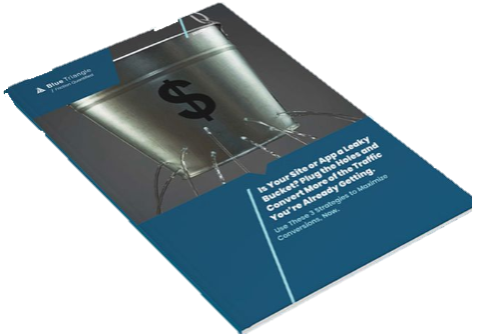"Remove all friction" has become a digital mantra, especially in product and customer experience teams. But what if removing all friction isn't actually the goal? What if fraud, not friction, is the enemy?
That's the provocative question we tackled on this week's episode of The Frictionless Experience. Nick Paladino and I sat down with Tutu Adenle, VP of Global Customer Experience at Eventbrite (and formerly of Twitter and American Express), to dig into a new angle we hadn't explored before: how carefully-placed friction can fight fraud and even strengthen customer trust and loyalty.
Here's what we learned.
Friction That Builds Trust
If you've ever received one of those "Was this you?" verification texts, you might have rolled your eyes. But Tutu sees something else: a trust-building moment.
Tutu said:

What once felt like an annoyance now reassures users that someone is watching out for them. In today's world overrun with fraudsters, scammers, and identity thieves, friction can be a signal of care.
It's Not How Much Friction. It's Where.
Not all friction is created equal. One of the biggest lessons from our conversation? Placement matters more than quantity.
"Maybe guest checkout for a $10 purchase isn't the place to put friction," Tutu said.
She continued:
She calls this "tactical friction." It's friction that's surgically placed to verify identity, flag anomalies, and signal safety without slowing down the flow where it matters most (such as first-time credit card use, unusual device logins, or high-risk transactions).
Triangulating Risk: More Tools, Not More Noise
Nick admitted during the episode that he used to be a skeptic.
"I was the guy saying, 'Why do you need this much? It's slowing down our pages.' I was pursuing the wrong message," he said. "I was ignoring that I got that final 4% of fraud to drop…I wasn't quantifying how it was creating a better experience for the rest of my customers."
Tutu didn't let that slide.
"You're not just stacking tools randomly," she told him. "You're triangulating different fraud patterns. Each tool catches what the others miss."
In other words, yes, it may cost you milliseconds. But those milliseconds might be protecting 96% of your legitimate customers from having a much worse experience later.
Fraud Prevention Is a Global Game—And a Cultural One
In Tutu's experience across brands like Twitter and Eventbrite, she's learned that one size never fits all. Especially when it comes to digital safety.
"Security thresholds that work in one market might create unnecessary barriers in another," she said. "I worked with a Brazilian team on images that meant different things in Brazil. Even slurs—it's Arabic, but different dialects mean different things in different countries."
Fraud detection thresholds that feel normal in one market can be off-putting in another. That’s why understanding cultural nuance is essential, not just for content moderation, but for how (and where) friction shows up in your experience. It must adapt to regional expectations, not just technical standards.
Recovery Is Part of the Experience
Even with the best fraud detection in place, breaches happen. But what you do next matters just as much.
"I was on an airplane heading to New York and got a notification I had just spent $2,300 at Tractor Supply," I shared during the episode. "I'd never shopped there in my life. By the time I landed, Amex had already canceled my card and overnighted me a new one."

Tutu agreed that loyalty is cemented not just by prevention, but by responsiveness: "You built the friction for the person. How do you make good on that to make sure that the person still feels like this was in your best interest?"
The Customer Feedback Loop You Can't Ignore
So how do you know when friction has gone too far? Tutu's answer was crystal clear: "The best place is going to be your contact center."
Data from customer service, such as sudden spikes in volume, can tell you what your metrics won't.
"I've been in the customer experience industry a long time," she said. "Nobody calls just to say, 'You guys are doing a fabulous job.' They call when something's broken. That's where you'll hear, 'I used to be able to do this, now I can't.'"
And for every customer who complains, Tutu reminds us, "there are others who are just like, 'I'm out.' And they walk away."
What Most Companies Get Wrong
When I asked Tutu what she believes is the biggest misconception about frictionless experiences, she didn't hesitate.
"That it's easy," she said. "Building a frictionless experience is not easy. It's a game of learning and understanding human behavior, which is not easy at all."
In other words, don't mistake "seamless" for "simple." True frictionless experiences come from deep insight, constant iteration, and, yes—a little well-placed friction. It’s not about building the fastest funnel or removing every click. It’s about understanding when not to get out of the way.
Final Word
OnThe Frictionless Experience, we're all about minimizing unnecessary pain points. But if there's one thing this episode made clear, it's that some friction isn't just necessary, it's a competitive advantage.
As Tutu put it:
Turns out, friction isn't the enemy. Thoughtless friction is. Strategic, protective, trust-building friction? That's the stuff loyalty is made of.
Listen to the full episode with Tutu Adenle on The Frictionless Experience. And if you have a story about good (or bad) friction, let us know!

During the holiday rush, every shopper matters
Optimize the customer journey before the eCommerce event of the year.

.jpg)



